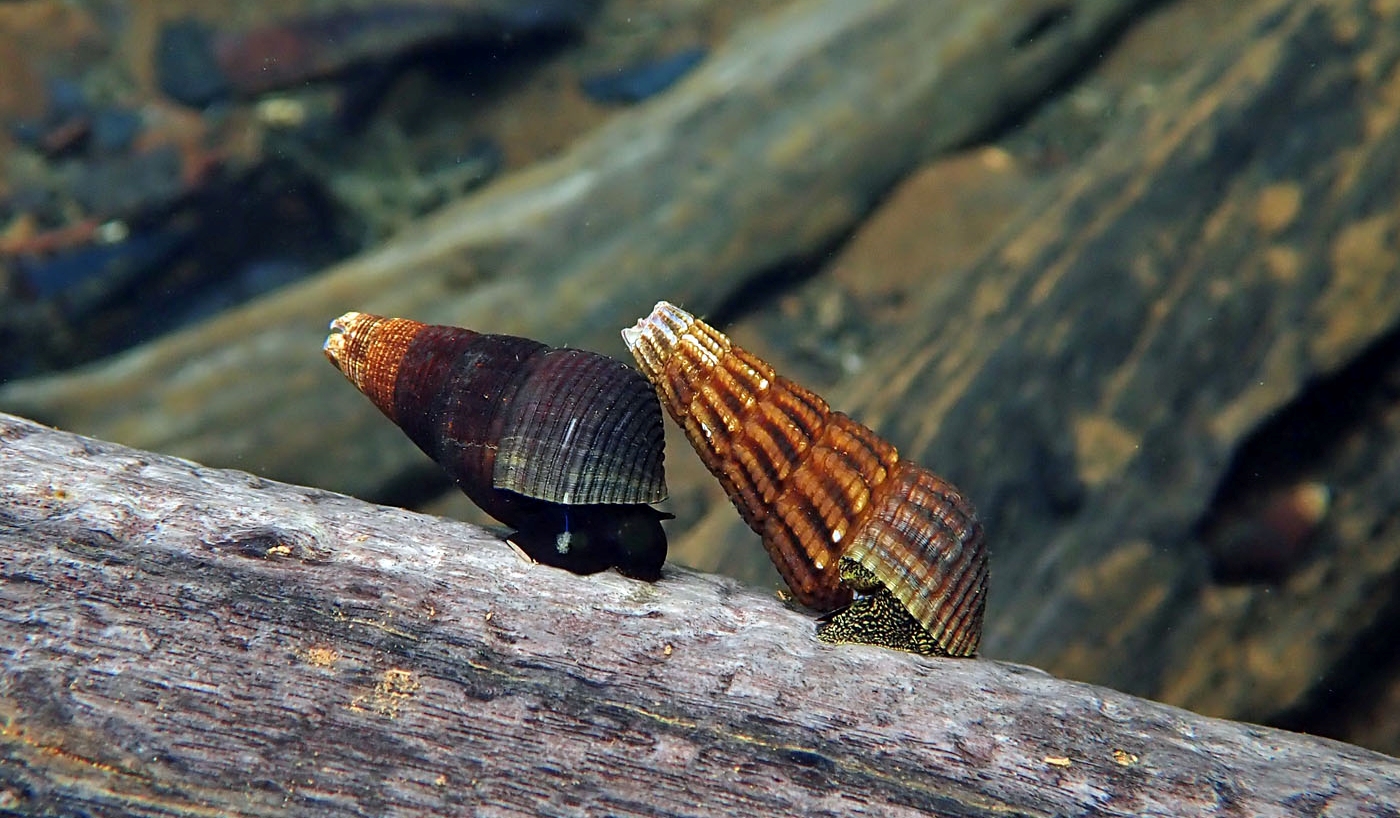Tylomelania sarasinorum (left) and T. towutica in their natural habitat in Lake Towuti. Both species occur syntopically (same locality/same habitat) on sunken wood as shown here, and on rocks.
© Werner Klotz (2019)
Sulawesi is well known, at least in the aquarist community, for the colorful species of the endemic (= occurring only on Sulawesi) Tylomelania (family Pachychilidae) from the island’s ancient lakes. There are 34 described Tylomelania species from these lakes and about 10-15 more are still undescribed. However, while the relative fame of Tylomelania from the lakes is well deserved, the freshwater snail fauna of the island is actually much more diverse. Tylomelania itself, for example, is also widespread in rivers and streams on almost all of Sulawesi except for North Sulawesi, with nine described species and at least the same number of yet undescribed species.
The closest relative (another member of the Pachychilidae) of Tylomelania on Sulawesi is the easily recognizable and widely occurring Faunus ater, which is a brackish water dweller, though.
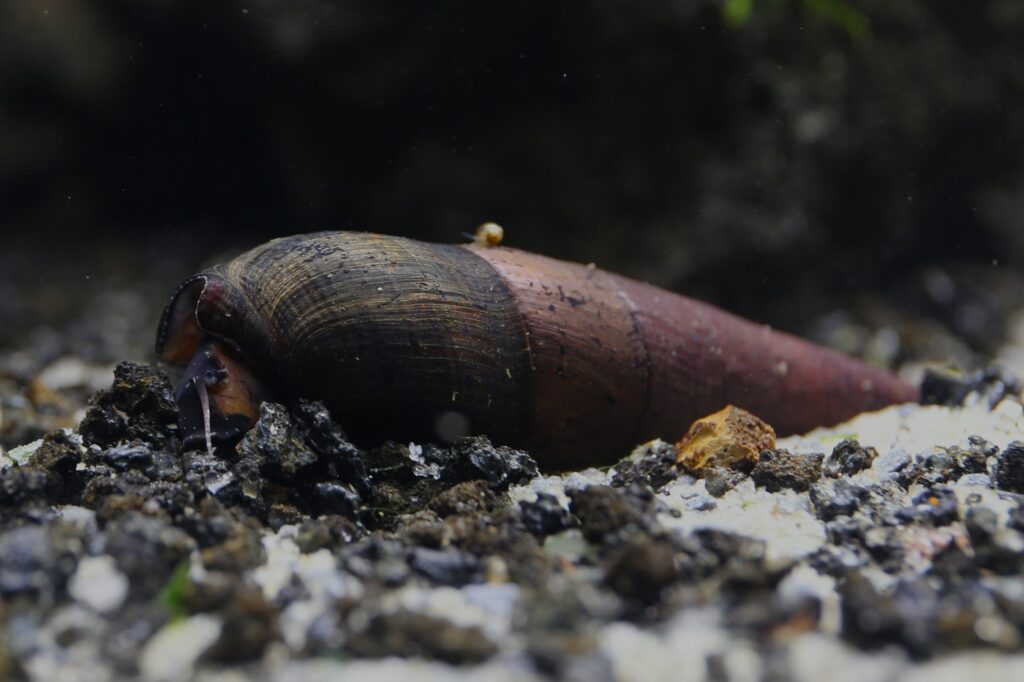
© Markéta Rejlková
Another very widespread pure freshwater group which can claim some (rather loose) relationship with Tylomelania is the Thiaridae (trumpet snails) and some of its members are extremely widely distributed across the Indoaustralian Archipelago, such as the well-known species Tarebia granifera, Mieniplotia scabra, Melanoides tuberculata (all viviparous, releasing crawling juveniles) and species of the genera Thiara and Stenomelania. The former three species occur virtually across the entire island and are often found together with Tylomelania in streams and rivers, but with rare exceptions not in the ancient lakes. Species of Thiara and Stenomelania are typically found in rivers in relative vicinity to the sea, but only in freshwater. Some of them release so-called veliger larvae that are dispersed across the sea, which explains the extremely wide distribution of some species (though the viviparous thiarid species mentioned above are also distributed across marine straits, which is a bit puzzling). Other widespread but less commonly encountered species that fall into this category include Sermyla riqueti and Balanocochlis glans, but given their more narrow habitat preferences this might also be an oversight. Recently the first supposedly endemic species of Sermyla, S. kupaensis, has been described from Sulawesi.
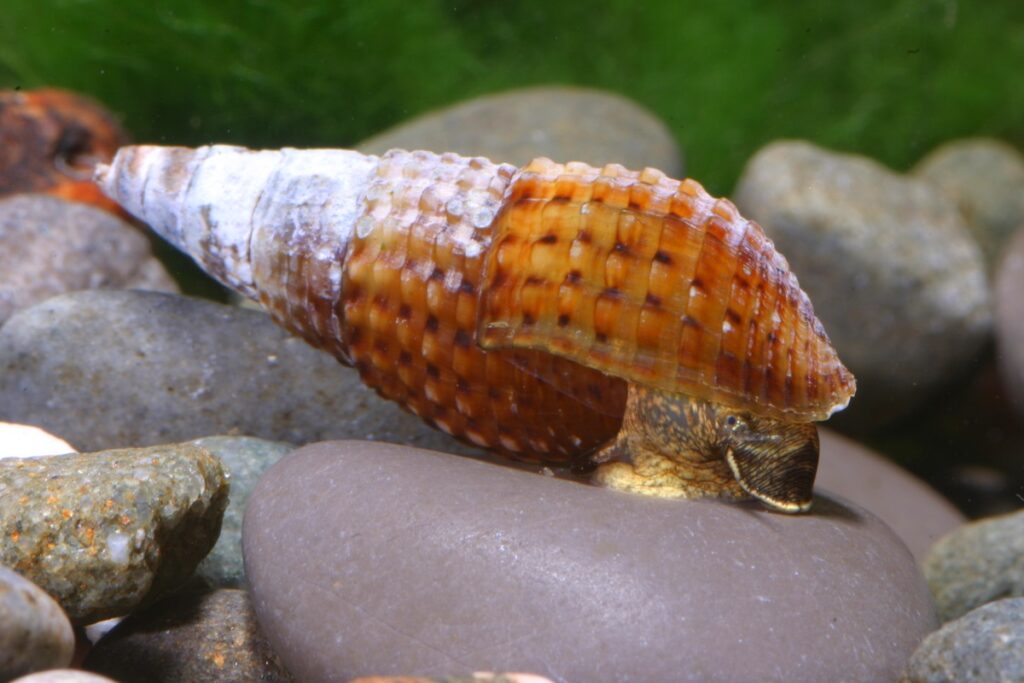
© Chris Lukhaup
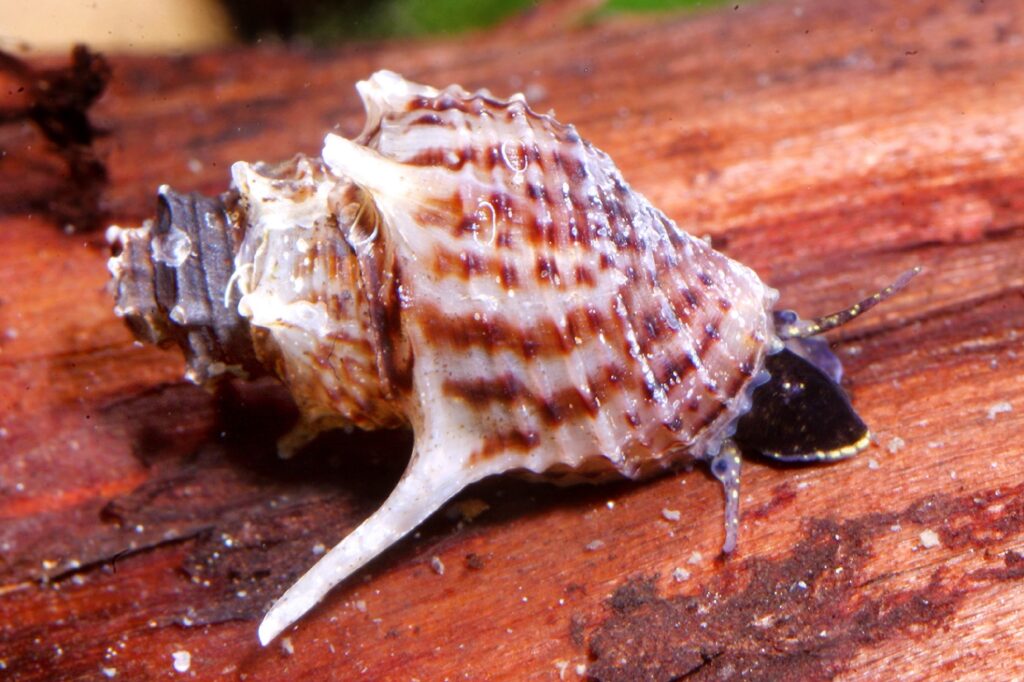
© Chris Lukhaup
The habitat of Neritidae (nerites) is overlapping with that of thiarids, but the distinctively shaped nerites comprise also brackish and marine representatives and tend not to go as far inland as the coastal river thiarids.
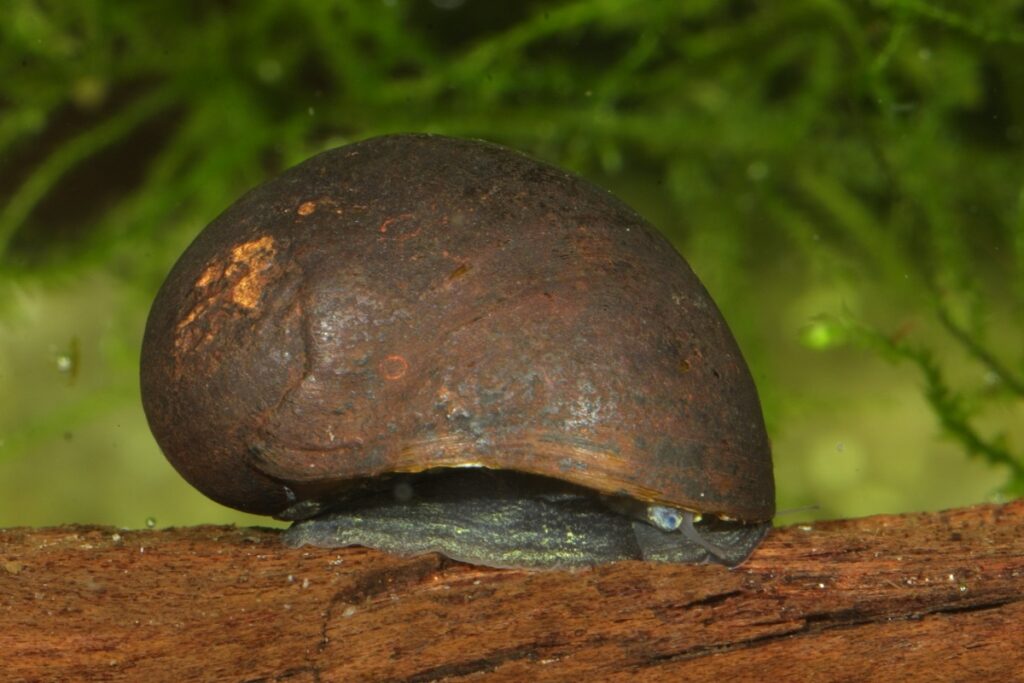
© Chris Lukhaup
Among prosobranchs – which can very roughly be described as snails with gills and an operculum, and include all groups mentioned so far – the river snails, Viviparidae, are also prominently encountered on Sulawesi. Again, it is an ancient lake species exclusively occurring in Lake Poso, Celetaia persculpta, which is best known outside the taxonomic community, as it is also very ornamental. Other viviparids of the genus Filopaludina in particular are very common on the entire island, though, and frequently found in rice paddies and stagnant parts of rivers or streams.
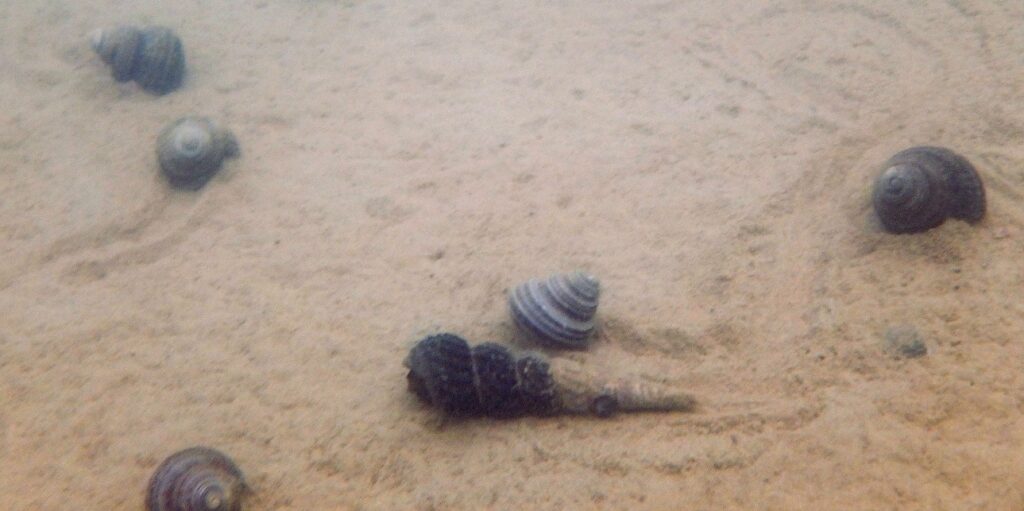
© Werner Klotz (2017)
Very much the same habitat is also shared by another well-known group, the apple snails or Ampullariidae. In addition to the native Pila celebensis (which was described from Sulawesi, as the name suggests, but is not confined to the island), the introduced Pomacea canaliculata (golden apple snail) is very widespread and purportedly displacing the native species.
Going from Sulawesi’s largest prosobranchs (not counting some Tylomelania species) to the smallest, the island is also home to a couple of somewhat related snail groups (all belonging to a grouping of families called Truncatelloidea) with minute to small species. Most notorious is the island’s only representative of the Pomatiopsidae, the endemic Oncomelania lindoensis. Presumably brought by birds to Sulawesi about two million years ago, it is restricted to two remote areas in Central Sulawesi including Lake Lindu in the heart of Lore Lindo National Park. This brownish species with a shell size of about 2mm would be utterly unremarkable were it not like the other two species of Oncomelania in eastern Asia and the Philippines a vector of schistosomiasis and thus a major public health concern. Less well known are Sulawesi’s endemic species of the Tateidae. Superficially most species resemble Oncomelania, but like Tylomelania they have evolved into so-called species flocks in the island’s ancient lakes in two endemic genera, Sulawesidrobia and Keindahan, with together 26 species. The two described species of Keindahan (only found in Lake Poso) have keeled and rather depressed shells, which sets them apart from Sulawesidrobia. No tateids have yet been found outside the ancient lakes and Lake Lindu. Finally, the family Bithyniidae is represented by Gabbia, of which an unidentified and presumably undescribed species has been found in Lake Poso.
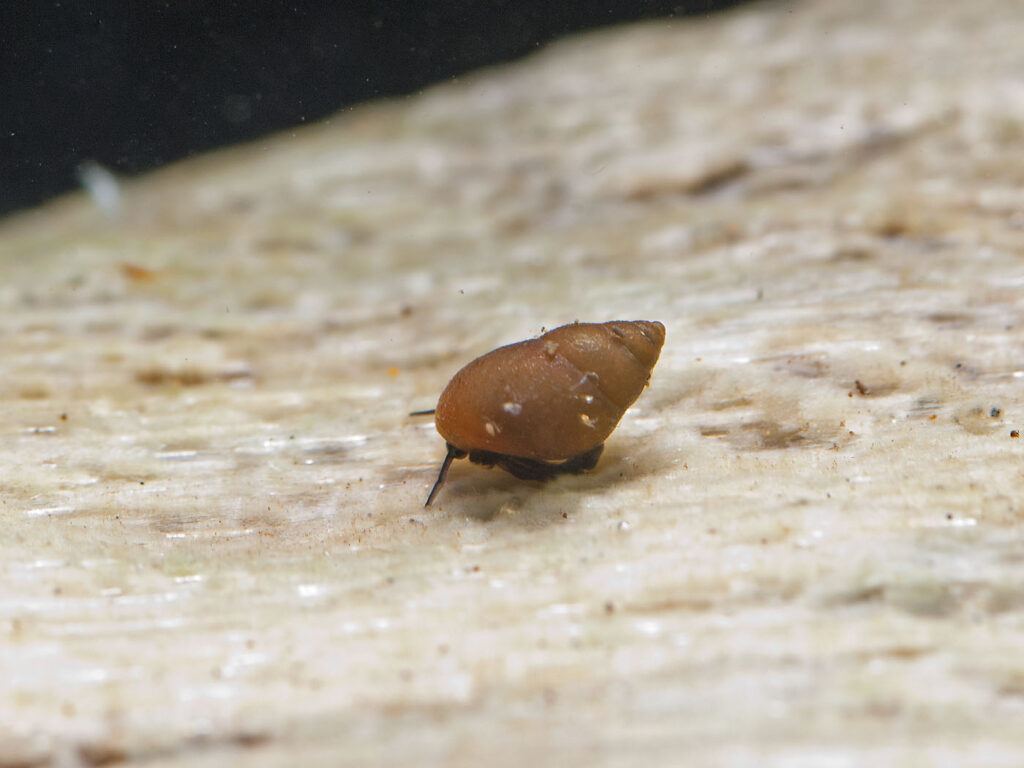
© Werner Klotz (2019)
Pulmonate snails (having a lung and lacking an operculum) comprise the remaining freshwater snail fauna of Sulawesi. One family in particular stands out, the Planorbidae (ram’s horn snails). This group of snails is perhaps best known by its compressed, circular (= discoid) representatives such as Planorbis or the limpet-shaped Ancylus. On Sulawesi, the group is represented by five genera spanning a wide range of shell forms. The discoid Indoplanorbis, which is widespread across South and Southeast Asia and another schistosomiasis vector, albeit for a cattle-infecting species only, occurs across the island. The other extreme in shell form is the limpet-shaped Protancylus, which might also be considered extreme in its habitat preference: the two described species are endemic to the ancient lakes of Sulawesi, with P. pileolus being restricted to Lake Poso and P. adhaerens to the Malili lakes. Both species are exclusively found on shells of Tylomelania species and do not dwell on other abundantly present hard substrates such as rocks and wood. The ancient lakes do harbor another peculiar planorbid, the large and thick-shelled endemic Miratesta celebensis from Lake Poso. In the Malili lakes, two much smaller and undescribed species of Amerianna resemble Miratesta. In vegetated parts of rivers or streams across the island at least three endemic species of Glyptophysa are found, but their distribution is yet poorly understood and more species might be expected. Finally, the genus Radix (Lymnaeidae, pond snails) is also found on Sulawesi, but even less is known about its taxonomy and distribution on the island.
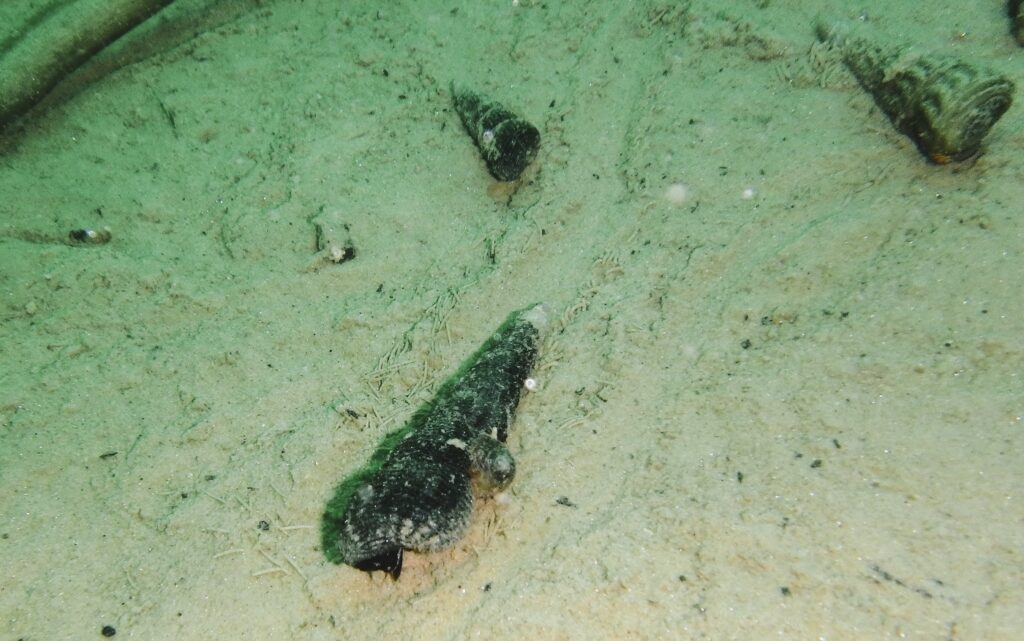
© Werner Klotz (2017)

© Chris Lukhaup
Thomas von Rintelen

